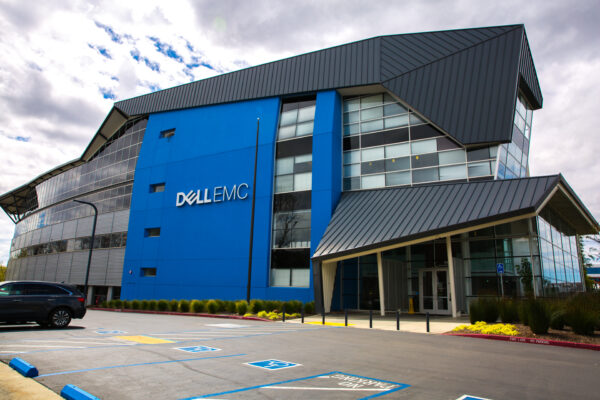Are Self-Driving Cars Really in the Near Future?
Forty-two hours…
That’s how many hours an average U.S. driver spends in traffic per year.
And we don’t lose just time while we’re sitting idle. Over 40 years, traffic will cost you $38,400, or $960 per year…
It is time and money we’ll never get back. During this time, we could be sleeping, reading, finishing work – anything.
But what if that wasn’t our reality? What if we didn’t have to constantly sit in traffic honking at the idiot who just cut us off? What if our cars could drive for us?
This is a fantasy major automakers are promising to deliver by 2020 – cars that need no driver.
But is that really possible? … Unlikely.
And investors need to take note. The hype surrounding autonomous cars could put a major dent in your portfolio. Here’s why…
Despite the predictions from Tesla (Nasdaq: TSLA), General Motors (NYSE: GM), Mercedes-Benz, BMW and others, a fully autonomous car will not hit the market in 2020.
Let me clarify: I am talking about a fully automated car, which does not require any action from the driver. You could put your dog in the driver’s seat, and it will make it to the dog park and back without any help.
A vehicle like that is considered to have “Level 5” autonomy, according to the National Highway Traffic Safety Administration’s zero-to-five scale.
We already have Levels 1 and 2. Many cars today can help you stay in your lane, brake and maintain speed. But if something unexpected comes up ahead, the driver needs to take immediate control.
Naturally, you would think that Level 3 and 4 cars would be the next steps. But the risk that comes from switching to human drivers in an emergency makes Levels 3 and 4 unviable.
When a person gets distracted, it is extremely hard to get their attention back. Before they analyze a potential danger and act on it, it might be too late. Relying on the driver at that point is what makes a Level 3 or 4 car even more dangerous than a Level 0.
Skipping to Level 5 Autonomy
It’s all hands on deck to get to full autonomy in three years. But skipping steps doesn’t make Level 5 cars any more realistic.
Let’s look at some of the problems facing the driverless world…
- Cost is still too high – A Tesla today is about $100,000, and it is not fully autonomous. A completely driverless car needs a LIDAR sensor. Those are $8,000 to $30,000 apiece, and they’re huge. You see that thing on top of the car in the picture below? That’s a LIDAR.

- Red tape – Waiting on regulatory approval could be a major speed bump. When a fully autonomous car crashes, who’s at fault? Anders Kärrberg, Volvo’s vice president of government affairs, stated that he expects the car manufacturers to take the liability. “It is really not that strange,” he said. “Carmakers should take liability for any system in the car.” Mercedes-Benz said the same. But will everyone follow their lead? And more importantly, will the government agree? There is no federal regulation for autonomous cars yet. Only 22 states have some form of regulation for them. To allow self-driving cars on the roads, all 50 states must achieve common ground. According to Moody’s estimates, that will happen in 2055.
- Technology lag – This is the biggest reason a 2020 target date is a pipedream. Driverless technology isn’t ready for the world yet. Self-driving cars use buildings and other infrastructure around them to determine their location. That’s problematic when they are on a highway or a bridge with only nature around. Autonomous vehicles also struggle with unmarked lanes on roads, and there are plenty of those. What’s more, snow, rain and other bad weather conditions can create havoc for cameras. John Dolan, principal systems scientist at the Carnegie Mellon Robotics Institute, knows the technology gap. Dolan recently said, “Heavy snow and rain tend to confuse LIDAR sensors and also cameras.” Anyone who has been caught in a storm knows it’s among the most dangerous situations for a driver. You need to be alert. With LIDAR, a little flurry can render the car unaware of where it is or what to do. Cybersecurity is another issue. Recently, an NSA-affiliated hacker named Charlie Miller demonstrated that he could remotely hack a Jeep Cherokee and paralyze it on a highway. That wasn’t a Level 5 car. A human could still override the computer. But in a fully autonomous car, “you’re totally at the mercy of the vehicle,” Miller says.
These problems need solutions, and these aren’t the only ones driverless cars face. Automakers are working on solutions. Some of the smartest engineers and programmers in the world are on the case. But when you put all of the issues together, a three-year timeline isn’t in the cards.
Stocks rocketing on driverless technology promises need to be approached with caution. Checking under the hood for solid fundamentals, earnings and sales growth is a great start.
I’m not against driverless cars. I’d love to get one myself for my hour-long commute.
But will I have it in 2020? I don’t think so.





